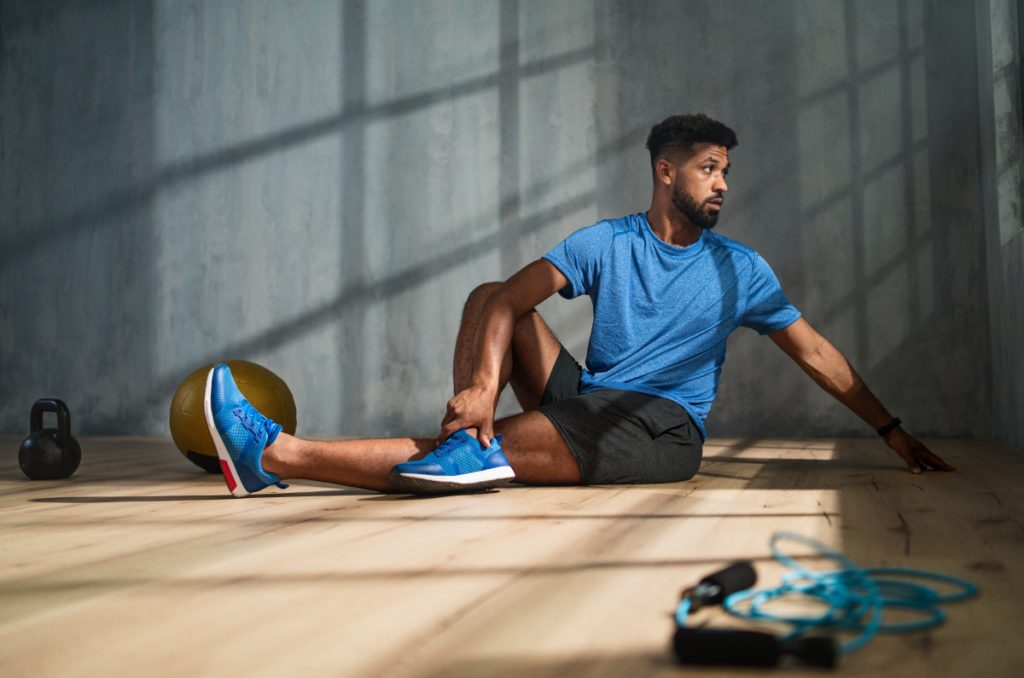Unlock Free Strength Gains With These 6 Mobility Exercises
Mobility training might help you carry heavier, squat deeper, run sooner, and get probably the most out of your workouts. No matter what your fitness objectives are, mobility exercises enable your body to maneuver extra effectively and reap extra positive factors from onerous work.
Thought of by many as an pointless or non-obligatory step in building strength and fitness, mobility training must be greater than a month-to-month yoga session or a five-minute foam curler warm-up.
Mobility is among the building blocks of a healthy body, says Brett Scott, D.P.T., a bodily therapist, strength coach, and founder and proprietor of Barbell Therapy and Performance. “Everyone should do mobility training, but every individual’s mobility training is going to look very different from one person to the other.”
For instance, the mobility of a powerlifter will look totally different than a person of their 80s who simply wants a bit additional assist having the ability to bend down and choose one thing up. The powerlifter may base their mobility on the motion sample of a deadlift whereas the senior may have extra basic training.
“If you can’t get into a good position to execute a lift, you won’t be able to engage the muscles you’re trying to work, and you’re just increasing your risk for injury,” says Grayson Wickham, D.P.T., C.S.C.S., a New York-based bodily therapist. So when you actually need to get all of the positive factors, it’s time to work mobility into your week.
What Is Mobility Training?
What precisely is mobility work? Stretching? Yoga? Bear crawls and strolling lunges? It might be any of this stuff.
Mobility training is any kind of exercise that helps your mobility, aka your capability to maneuver freely and with ease. Though mobility is usually used interchangeably with flexibility, mobility incorporates flexibility and strength to enhance your joint’s vary of movement and defend the muscle tissue that encompass varied joints—versus having the ability to passively lengthen your muscle tissue.
“While the words mobility, flexibility, and stability kind of get used interchangeably, mobility training refers to the use of exercises and stretching patterns to mobilize the body,” says Brian Kent, a Chicago-based Nike coach and proprietor of BKSTRENGTH.
“When I think of mobility, I think of how well your body bends,” says Kent. “And then mobility training means using exercises and stretching patterns to ready the body for varying types of movement,” whether or not that be a exercise or a stroll down the road.
If you’re not hitting the depth you need in your again squat, possibly you’re not squatting far sufficient, or maybe you don’t have the vary of movement to take a seat deep sufficient. Mobility training might help repair your depth drawback.
Making probably the most out of your mobility training begins with doing stretches and strikes chosen particularly for an exercise you need to enhance on says Jordan Feigenbaum, M.D., M.S., a San Diego-based strength coach and founding father of Barbell Medicine, which goals to bridge the hole between medication, conditioning, and strength training.
For your squat depth, “gradual exposure to a below parallel position is likely to help you not only feel where you need to be but will also give you that neuromuscular familiarity with that position,” says Feigenbaum.
“So it might start with a squat where you are holding on to a band or the side of a rack and then going down to below parallel and kind of holding that position where you can feel where the crease of their hip is in relation to their knee.” Over time, this continued mobility training program might help your hips really feel much less tight as you’re squatting down, assist enhance your stability, and enable you hit depth in your subsequent squat PR.
Scott agrees, saying, “We call this movement preparation, where we’re taking that new range and we’re learning to be stable and actively control those ranges of motion. Instead of just stretching and then going and doing heavy squats, I want to do something maybe a little bit lighter, a little bit slower, and feel that I have the new sensation of control over that new range of motion.”
Why You Need to Start Working on Mobility
You’ve in all probability heard this earlier than, nevertheless it’s value repeating: “Because we spend so much time in poor, static positions including in front of the computer, TV, or phone, our body gets ‘tight’ and lacks both optimal range-of-motion and adequate activation of specific muscle groups,” says Wickham.
Head right into a exercise with restricted range-of-motion, and your help muscle tissue will start to compensate. Because help muscle tissue are sometimes smaller and weaker, forcing them to deal with extreme torque is a recipe for ache and harm. Worse, in case your lifts aren’t activating main muscle tissue as a result of you’ll be able to’t obtain full range-of-motion, you in all probability will not even construct the muscle you are working towards.
But as an instance you already heat up if you get to the gymnasium. Isn’t that sufficient? Well… in all probability not.
(*6*) Wickham says. And you by no means actually comprehend it’s bother till it’s too late: “Most people can get away with poor mobility and movement for a finite amount of time—until your body has had enough, and injury and pain set in.”
What Are the Benefits of Mobility Training?
There are two causes to do mobility work: to stop getting injured and to get stronger. We know, you solely need to hear in regards to the latter—however nothing will put the harm in your positive factors like an impingement or pressure that stops you from lifting within the first place.
“Inadequate mobility and stability lead to about 90 percent of the injuries that come into our physical therapy practice,” says Wickham. Of course, nobody cares about their harm danger till one seemingly typical carry goes awry within the matter of some seconds. But it is best to. Just quarter-hour of mobility warmup work every single day can stop a devastating harm—torn rotator cuff, slipped disc—that’ll hold you out of the gymnasium (and in plenty of ache) for months.
How will mobility work assist? Consider the deadlift: To obtain optimum deadlift place, you want versatile hips and mobility in a number of different joints and muscle tissue. (Tight hamstrings, for instance, will restrict your hip movement.) When you’ve got rigid hips or hamstrings, neighboring joints that may’t deal with a lot weight at that angle—like, say, your susceptible decrease again—must choose up a number of the pressure.
A day later, that additional lower-back work may really feel like a bit soreness in your lumbar backbone. But hold lifting like that, and likelihood is fairly high you will finally pay the value—whether or not from one other tight deadlift or simply bending all the way down to carry your child off the ground.
If you do mobility work commonly, although, you enhance that range-of-motion—looser hips, extra versatile hamstrings—and your body can use your powerhouse muscle tissue to muscle that barbell off the ground as an alternative.
Furthermore, restricted range-of-motion interprets to restricted muscle development. (Looking at you, Mr. Load-Up-the-Legs-Press-and-Move-It-an-Inch.) One research within the European Journal of Applied Physiology discovered that, in comparison with 12 weeks of shallow squats, doing deep squats constructed extra thigh muscle, improved knee extension and flexion, and boosted squat-jump energy.
“Having optimal mobility and movement lets you achieve better positions, which will allow you to be more efficient in your lifts or movements, which will translate to getting stronger and faster,” Wickham says.
The advantages of fine mobility go far past the gymnasium. They can truly assist in your body’s capability to maneuver no matter the place you might be or what you’re doing. We stay in a static world. While we might get out for a run within the morning or head to the gymnasium after work, many people spend our days sitting at a desk with little to no motion. So it’s no marvel after we go to stand up from our chairs, not to mention attempt to squat down with a barbell on our backs, our hips or again really feel tight and sore.
“Mobility stretches are great for a sedentary population who have seen a decline in physical performance mostly due to inactivity,” says Kent. “The better our body bends, the better our body performs.”
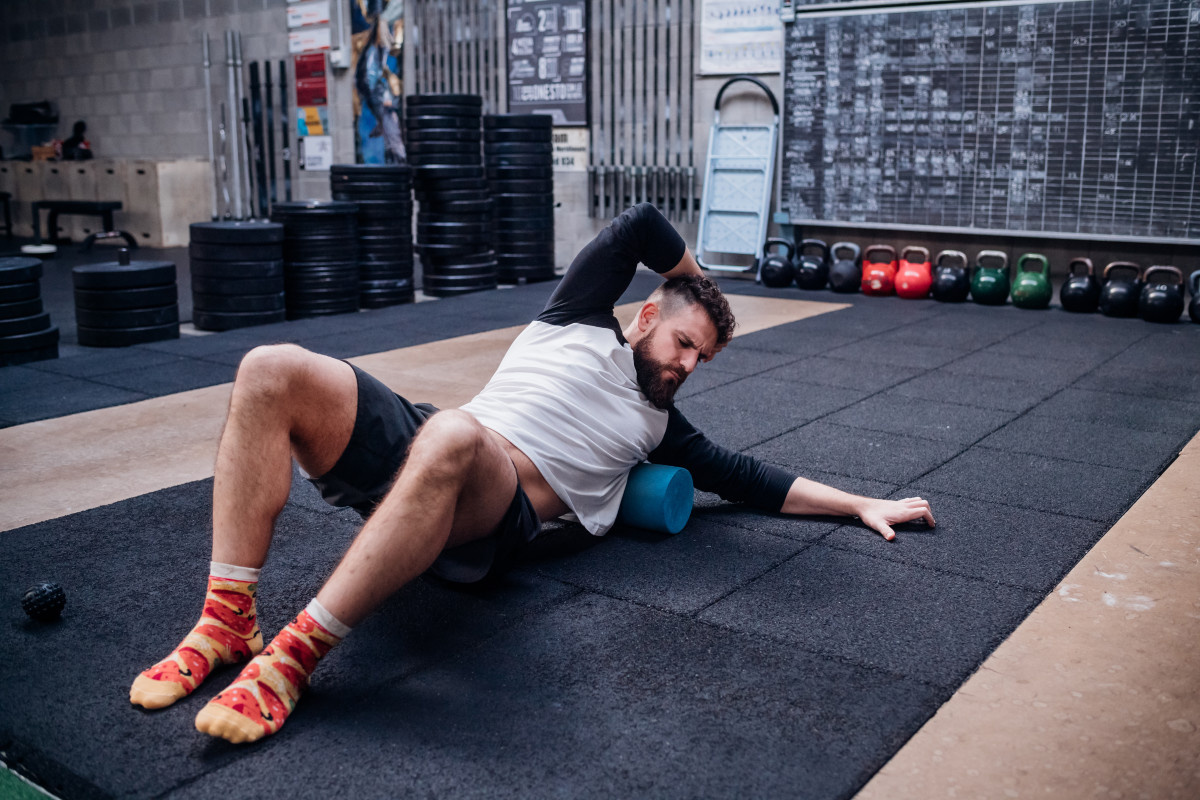
How to Start Mobility Training
Don’t consider mobility as a selected kind of exercise, however moderately as a basic athletic ability, like strength or energy or velocity, Holder says.
And as with building strength or velocity, you should construct mobility with a number of strategies.
At the naked minimal, Holder suggests a warmup routine with three elements:
- Myofascial work like foam rolling or ball rolling.
- Controlled dynamic stretches.
- Bodyweight actions, just like the squat or lunge.
Most vital: transfer slowly and intentionally. Controlled dynamic stretching will improve joint range-of-motion and improve muscle energy higher than each static stretching (stretch and maintain) and ballistic stretching (stretch and bounce), in accordance with a 2017 research printed in Sports Medicine.
Second, base your warmup in your exercise. Before lower-body workouts, do hip circles, legs swings, and Buddha squat holds to open up the musculature round your hips, quads, hamstrings, calves, and ankles. Before upper-body workouts, do scarecrows and shoulder circles to extend range-of-motion within the shoulders (particularly the rotator cuff).
Matching your warmup along with your exercise won’t solely activate the muscle tissue you are specializing in, but in addition cement correct joint alignment and muscle activation in your mind, Holder provides.
In addition to pre-workout mobility, incorporate purposeful actions into your day by day workouts. Trade your typical cardio for swimming or rowing to enhance upper-body range-of-motion. Work strikes like bear crawls or duck walks into your strength classes.
Lastly, for critical range-of-motion positive factors, flip lively restoration day right into a low-intensity mobility day. Take a yoga class or do one among your warmup routines that focuses in your bother areas, like tight shoulders or hamstrings, Holder suggests.
The Best Mobility Exercises
Each of the mobility exercises under might help along with your full-body mobility, particularly components that are usually tight resembling your again, hips, and wrists. By doing the exercises with each other you’ll be able to loosen tight muscle tissue and meet your objective of gaining a fuller vary of movement all through your body.
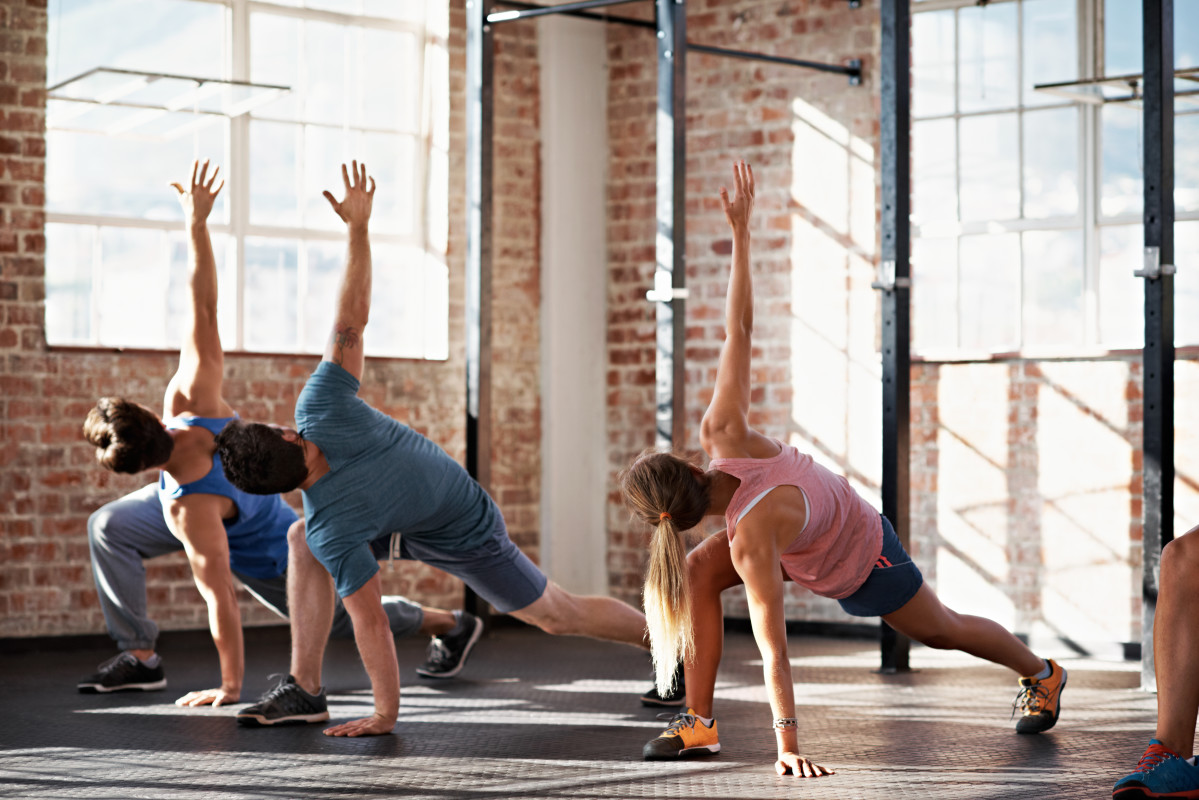
The World’s Greatest Stretch
The title is not any exaggeration. If you solely have time for one mobility transfer, make it the world’s biggest stretch. It hits the important thing areas affected by sitting at a desk for hours and although “stretch” is within the title, it strengthens because it lengthens, like the most effective mobility strikes.
Good For: Hips, thoracic backbone, ankles.
How to Do It: Step ahead along with your left leg in a lunge. As you decrease, set your proper hand on the ground even along with your left foot. Your proper knee ought to stay above the bottom. Now transfer your left elbow towards the within your left foot, and relaxation it on the ground. Square your hips so you’re feeling a stretch on either side, and attempt to hold your again as flat as attainable. Move your left hand exterior your left foot, and twist to achieve for the ceiling.
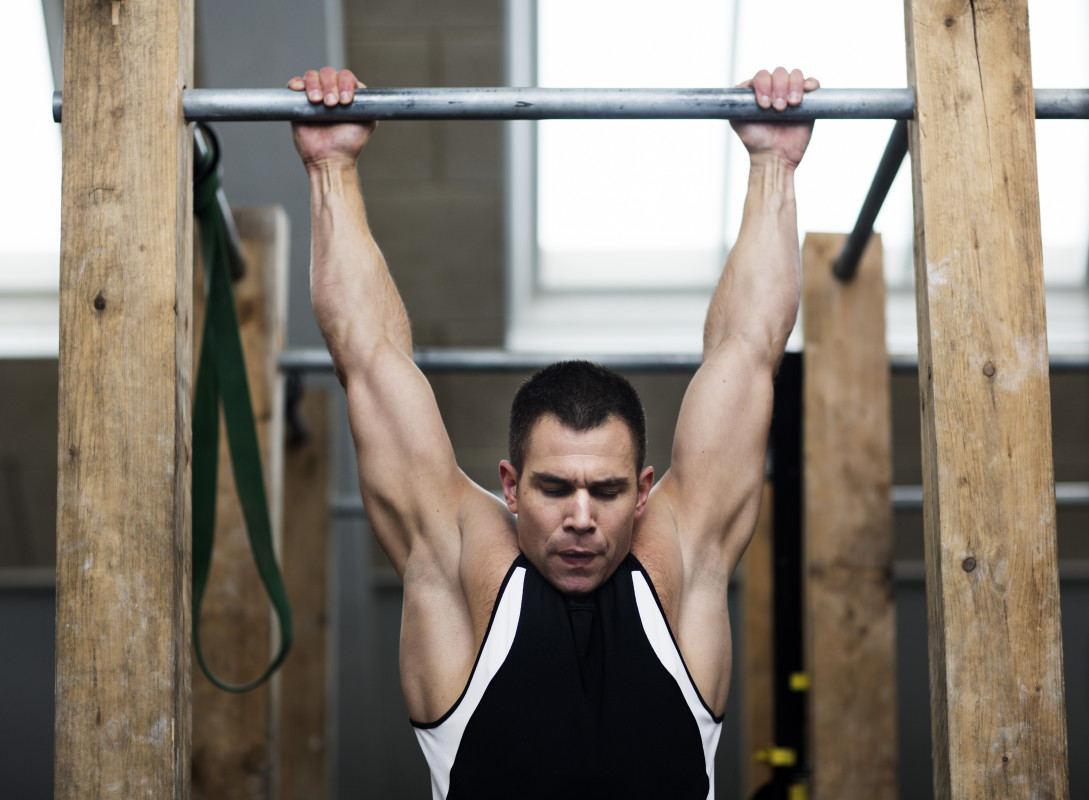
Dead Hangs
Addressing the tissue round your lats might help cut back tightness in your higher again and shoulders. Dead, or lat hangs, can work to stretch the joints and muscle tissue and finally provide you with better mobility, and adaptability and also can assist enhance your grip strength for exercises like deadlifts and pull-ups.
Good For: Upper again and shoulders.
How to Do It: With your arms about shoulder width aside, seize onto a safe pull-up bar with an overhand grip. With your toes off the bottom, hold your arms outstretched and loosen up your shoulders. Allow your body to sink deeper into the stretch. Hold for 10 to 60 seconds or till you’re feeling a deep stretch in your again.
Elevated Prayer Stretch
Commonly carried out in yoga courses on the bottom, the prayer stretch (watch a demonstration here) opens up your hips, shoulders, and decrease again. By elevating your torso by resting your elbows on a bench, you may get a deeper stretch, particularly in your lats.
Good For: Hips, shoulders, and again.
How to Do It: With a bench in entrance of you kneel on the bottom in entrance of it and attain your arms straight out. Resting your elbow on the bench and bend them to level your fingers on the ceiling. Let your head sink between your arms and sit again in the direction of your heels along with your toes hip-width aside. Breathe deeply as you proceed to sink deeper into the stretch and maintain for 15 to 30 seconds.
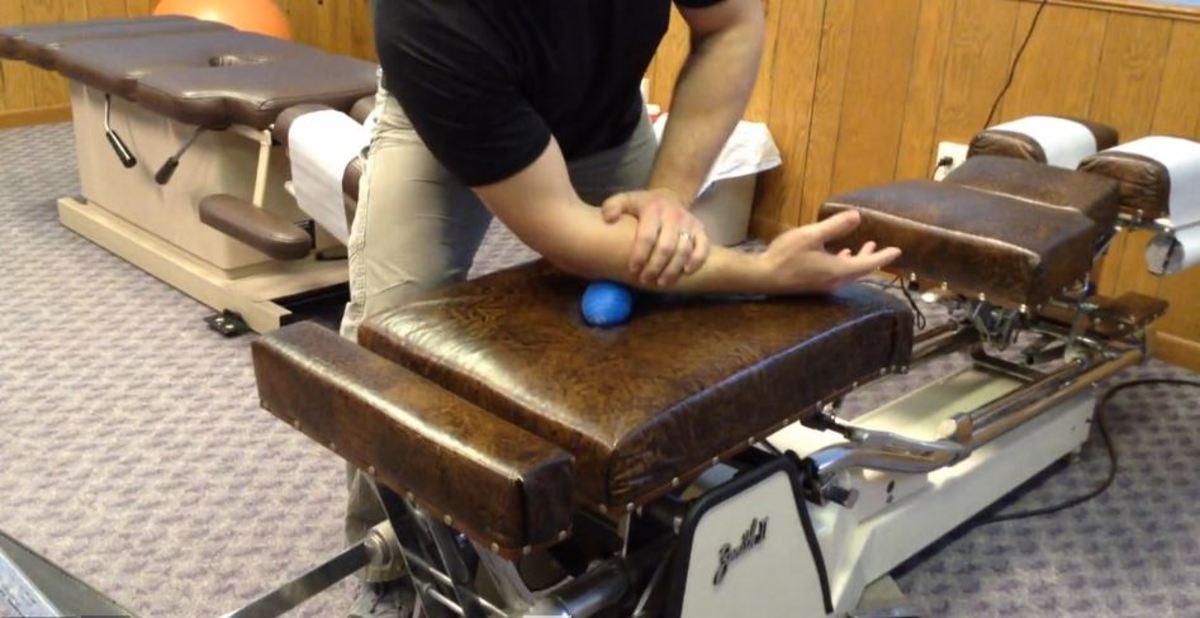
Courtesy MobilityWOD&interval;com
Forearm and Triceps Smash
Elbow ache, also referred to as tennis elbow even when athletes by no means choose up a racket, is repetitive-use harm largely brought on by the forearm muscle tissue which connect to the skin of the elbow. The forearm and triceps smash might help ease ache and stress brought on by overuse by loosening up muscle tissue on either side of the joint and growing the vary of movement of each your elbows and shoulders.
Good For: Elbows.
How to Do It: First, your forearm. You’ll want a lacrosse or tennis ball. Find a counter or bench. Turn your left hand over so the palm faces up. Place the ball beneath your forearm the place the wrist meets the forearm. Use your different arm to use pressure to the highest of your left forearm. Contract your hand right into a fist and maintain for a couple of seconds. Relax for 2 seconds, then repeat. You also can make circles with the hand. Repeat on the opposite arm.
Now, your triceps. If you’re within the gymnasium, place a barbell on the squat rack reaching shoulder top and place your left arm on it, simply above your elbow. Take your proper hand and push down in your left bicep so you’ll be able to apply pressure between the barbell and your tricep muscle. Next, rotate your left palm towards your body after which the alternative manner. Doing 3 sets and of 5 to eight reps per arm might help cut back ache and loosen your tight muscle tissue.
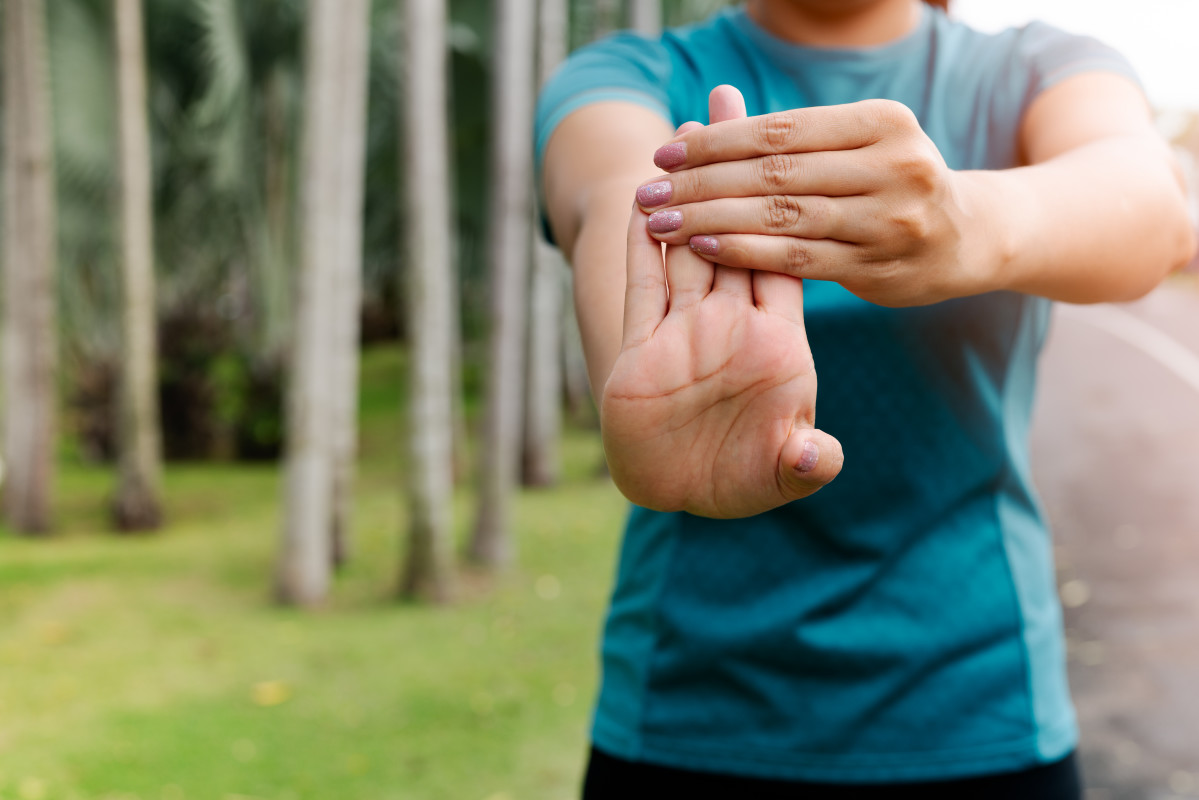
Wrist Flexor Stretch
Addressing wrist flexibility points for exercises like entrance squats could be a game-changer for lots of athletes. If you might be having bother getting your wrists into the front-rack place for a entrance squat, train your wrist flexor mobility.
Good For: Wrists.
How to Do It: Start by inserting your proper hand straight out in entrance of you along with your palm dealing with down. Use your left hand to softly pull your hand and fingers upward with out shifting your arm till you’re feeling a light-weight stretch. Don’t attempt to do an excessive amount of the primary time round, this may take a while and repeated effort to assist relieve stress over time. Hold for 15 to 30 seconds and repeat 2 to 4 instances.
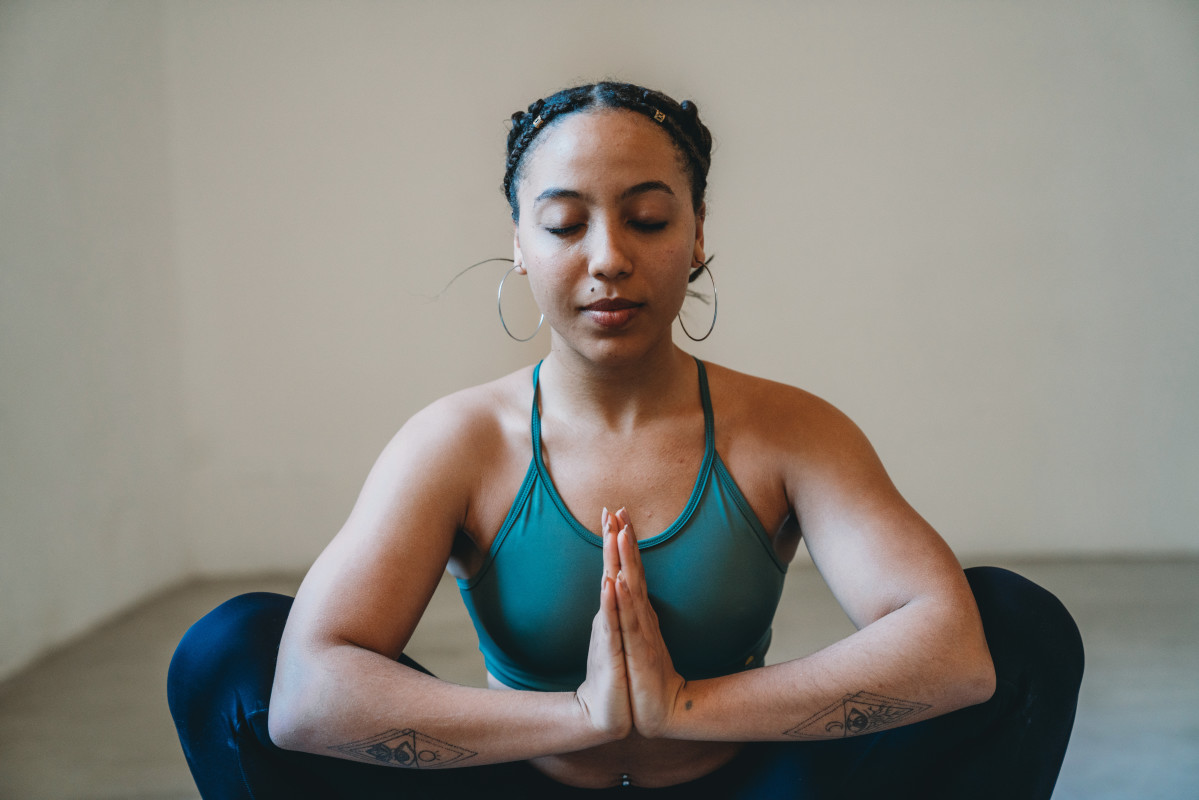
Frog Squat
Sitting in a chair at a desk all day can result in tight hips and an achy again. This transfer relieves tightness and ache by opening your hips and fascinating your glutes.
Good For: Hips and decrease again.
How to Do It: Stand up straight along with your toes simply previous shoulder width aside along with your toes pointing barely outwards. While sustaining an upright place push your hips again and descend right into a squat place. Next, put your arms collectively and place your elbows on the within of your knees. Lean ahead barely and carry your hips into the air till you’re feeling the strain in your hamstrings. Once the strain builds, decrease your self again right into a squat place. Repeat for 3 to five sets of seven to 10 reps.
How to Track Mobility Progress
Tracking your mobility progress isn’t so simple as gauging your running time or hitting your bi-monthly squat PR. Keeping a journal or taking movies of your mobility training might be useful for evaluating how you feel and look by way of every motion sample over time.
As for the period of time it takes to see outcomes, Scott explains that “true mobility training is much like strength training, where it could take anywhere from six to 12 weeks to actually see a change in the ability to further extend the muscle.”
He additionally provides the easiest way to trace mobility progress is by working with a coach or somebody who has a certification in purposeful motion screening, which is a extra standardized manner of seeing how a person is shifting of their on a regular basis life.
Who Should Do Mobility Mork?
Literally everybody ought to add motion work to their warm-up. Just as a result of you understand your manner round a gymnasium doesn’t imply you in any manner have good range-of-motion, says Joe Holder, a efficiency specialist at S10 gymnasium in New York, Nike coach/run coach, and founding father of The Ocho System. “Mobility isn’t a skill that is contingent upon body-fat percentage.”
Wickham agrees: “Your body doesn’t care how long you’ve been working out. If your shoulder has limited range-of-motion and you keep jamming it every time you perform a pushup, bench press, or snatch, it’s eventually going to push back by way of injury.”
How Often Should I Do Mobility Training?
How usually it is best to carry out mobility stretches is determined by your objectives and your particular person body. “If you have a specific restriction and are trying to increase mobility, I recommend doing static stretches on a daily basis,” says Jake Landes, a Nashville-based bodily therapist. “If I am just trying to maintain health and trying to keep myself mobile, then I recommend people do mobility training exercises three to four times a week.”
Many private trainers additionally counsel working in your mobility for a couple of minutes every single day moderately than one or two large classes every week. “I like thinking of mobility as part of our personal pre-game warmup,” Kent says, “something that can be done every day for 5-10 minutes. Life is dynamic, we have to train for it.”
Everyone’s mobility training will and may look totally different. If you need to be extra cellular total however have a busy schedule, sticking to a fundamental mobility routine for a couple of minutes every single day might help you get the outcomes you might be on the lookout for. If you might be an athlete and have a selected mobility objective in thoughts, like squatting under parallel, spending 20 minutes doing particular actions like frog squats and prayer stretches earlier than your exercise might be helpful.
Does Mobility Training Build Muscle?
Ask a room stuffed with strength training coaches, bodily therapists, and private trainers if mobility training builds muscle tissue and also you’ll get a variety of solutions from “yes, of course” to “no, that’s impossible.” What we do know is that when your body is ready to transfer in a most vary of movement, you’ll be able to enhance your total high quality of training. For instance, when you enhance your hip and ankle mobility you’ll be able to squat deeper with correct type main to larger and stronger glutes and quads. So whereas mobility training itself might not construct muscle, it could actually act as a catalyst, placing your body within the right positions to construct strength and acquire muscle.
Is Mobility Better Than Strength?
You can’t actually have strength with out mobility and you may’t have mobility with out some form of strength. On the floor, strength and mobility don’t appear to be interconnected however that couldn’t be farther from the reality. While it’s onerous to say which one is “better” if you consider it, mobility is a building block for strength. If your muscle and the joints surrounding mentioned muscle aren’t cellular, you gained’t have the ability to get into the right positioning for a squat, run so far as you used to, or comfortably press overhead.
While they work in tandem with each other, strength and mobility have separate capabilities. Strength, by definition, is the flexibility to exert power with a view to overcome resistance. In the fitness world, this seems to be like a person’s capability to carry or choose up heavy objects. Mobility alternatively is a person’s capability to maneuver their body or part of their body by way of a full vary of movement. Both are vital and essential points of dwelling a healthy life inside and outdoors of the gymnasium.
Is it Okay to Do Mobility Training Every Day?
According to Scott, most individuals ought to do mobility training every single day. For his shoppers, he takes a web page from Dr. Andreo Spina, a motion coach and Creator and CEO of Functional Anatomy Seminars.
“There is something I prescribe most people on a daily basis… it’s what we call controlled articular rotations,” Scott says. “With this, we’re trying to get each and every joint in the body that we use on a daily basis to move through its full range of motion so that we can at least maintain our current mobility,” Scott says. “It’s much like you brush your teeth every day, you want to brush your joints every day.”
For Scott, it’s so simple as a five-minute routine within the morning and within the afternoon or at night time after work to maintain your body healthy and cellular.
What Muscles Are Used to Stand Still?
There are a number of totally different muscle tissue and muscle teams our our bodies use to face. While standing is a pure response for many people, our body truly has to work pretty onerous to carry out this motion. When standing, the first muscle tissue we use are the quads, glutes, and hamstrings. Our core muscle tissue are additionally activated as they supply us with the soundness to maneuver with out falling over.

